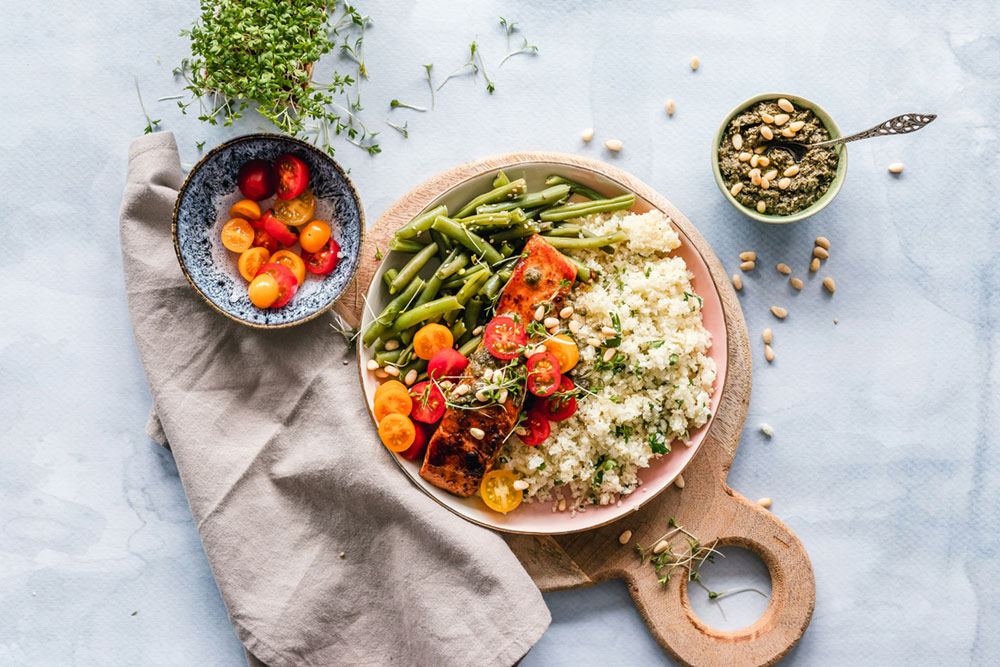I was asked to write an article for The Green PolkaDot Box-an on-line grocery store that only sells products that are Non-GMO. As their ingredient analyst, I make sure that happens! They are starting an education aspect of their business and I was asked to participate. As a health educator, I was more than pleased to be involved!
Grass vs. Grain Fed Beef
There are many considerations that should effect the decision as to whether you purchase grain versus grass-fed beef. But first, a little cow 101: cows are ruminants, meaning they have multi-chambered stomachs designed to digest grasses, not corn and soy, which most factory-farmed cows are fed. Keep in mind that in the United States, most corn and soy is genetically modified. This diet is designed to keep prices low while producing as much meat as possible in the shortest amount of time. For a cow, eating this way causes their stomachs to become unnaturally acidic (called acidosis), which can lead to ulcers, liver abscesses, and weakened immune systems. The cattle are then given large amounts of antibiotics to survive the difficult conditions of their confinement, until they are slaughtered. Excessive antibiotic use in animal agriculture may create resistant strains of microbes in humans.
.
- Nutrients. Clemson University’s research has found that pasture-fed beef contains twice the amount of conjugated linoleic acid, a potent cancer-fighting compound. Grass fed beef is also leaner than grain-fed beef and contains greater concentrations of desirable fatty acids and antioxidants. There is no question that grass-fed beef is nutritionally superior to grain-fed beef.
- Humane treatment of the animals. Feedlots or Concentrated Animal Feeding Operations (CAFOs) can contain 250,000 animals in what can only be called inhumane conditions. On your computer, type in CAFOs under Google images and that alone will steer you towards grass-fed beef. Another consideration, according to UC Davis, is that “CAFOs have the potential to show higher gaseous and particulate matter emissions compared to smaller farms. Pollutants like hydrogen sulfide, ammonia, volatile organic compounds, particulate matter, and endotoxin are emitted on CAFOs and can potentially affect worker health.”
- Environmental concerns. Feeding huge numbers of animals in CAFOs actually uses more foodstuffs –grains that could feed humans– than it produces. These operations contribute directly to global warming by releasing large amounts of greenhouse gases into the atmosphere – more than the entire global transportation industry. This cannot be said of grass-fed beef.
- Cost. Remember that there is a difference between expense and cost. The expense is what you pay for your meat. The cost has more long-term consequences to your health and our planets health for all of the reasons mentioned above.
In my nutrition practice I work with people who are homeless, with Veterans trying to get their lives together, and with families of lower socio-economic levels. To suggest to these folks (who consume beef) to purchase only grass-fed beef sounds a little elitist. The flip side of that argument is that American’s eat twice as much protein as they need and there are many foods available to supply protein besides meat. If there are budget constraints, eat less beef and choose grass-fed if at all possible.
Before you take a bite, consider how your choices affect your health and our Earth’s health. A good starting point is the principle of “harm reduction.” The most important action is to begin to make informed choices about what we eat—and to think about the connections and consequences of what we do and weigh the necessities and tradeoffs.
Cites:
https://www.ncbi.nlm.nih.gov/pmc/articles/PMC2846864/
https://www.americangrassfed.org/wp-content/uploads/Meat%20Quality-Susan%20Duckett.pdf
___________________________________________________________________________________
Here’s the link to The Green PolkaDot Box for you to order your grass-fed beef and other ingredients.
https://www.greenpolkadotbox.com/invite/id/32/
Beef Fajitas
This recipe is from Patty’s book, More Vegetables, Please!
Serves 6
Marinade:
4 garlic cloves
2 tablespoons lime juice
1 teaspoon sea salt
1 1/2 teaspoons black pepper
2 teaspoons cumin
1 1/2 teaspoons onion powder
2 pounds flank steak
2 tablespoons olive oil
3 medium bell peppers, mixed, red, yellow and green, thinly sliced
1 medium onion, thinly sliced
1 cup radishes, thinly sliced
2 garlic cloves, chopped
Cilantro, coarsely chopped
Make the marinade by chopping and mashing the garlic into a paste. In a medium bowl, combine the garlic paste with the remaining marinade ingredients.
Trim the fat from the flank steak. Add the steak to the marinade, turning several times to coat all sides. Cover the steak and marinate in the refrigerator for at least 1 hour or overnight.
Grill the steak on a hot grill to the desired doneness. This can be from 4 to 10 minutes per side. Remove the steak and allow it to rest for 10 minutes.
Meanwhile, heat the oil in a large sauté pan over medium-high heat. Add the peppers, onions, radishes and garlic and cook until tender, but not soft, about 5-6 minutes.
Slice the steak against the grain into thin slices. Serve immediately, arranging the steak and pepper mixture on warm plates and garnish with the cilantro. If you have flat cast iron griddles used just for fajitas, by all means, use those with the steak mixture sizzling as they are presented to the table.
Serve the fajitas accompanied by warm flour or corn tortillas, fresh salsa, sour cream, guacamole and shredded Oaxaca cheese.















